Table of Contents:
- Introduction
- History of Microsoft
- What are the six key Microsoft Cloud Services?
- Microsoft Azure
- MS Office 365
- MS Windows Intune
- Microsoft SQL Server with MS System Center
- Enterprise Mobility Suite
- Microsoft Visual Studio
- Windows OS
- Internet Explorer/Edge
- Microsoft Digital Transformation
- Other Microsoft Services
- Notable Acquisitions
- Conclusion
Microsoft is by far the world’s largest software development and application company. Microsoft now powers the entire software sector. Bill Gates and Paul Allen founded Microsoft Inc. in 1995 and launched the OS (Operating System) business in 1980. From then on, it became the world’s dominant and only standardized operating system.
Regardless of their ability to integrate business ideas that help them navigate the rapidly evolving worldwide economy, corporate organizations face unending operational obstacles. Microsoft Corporation has been probably one of the most prominent corporate names in the technology industry since its inception, with its performance placing it among the Fortune 500 businesses.
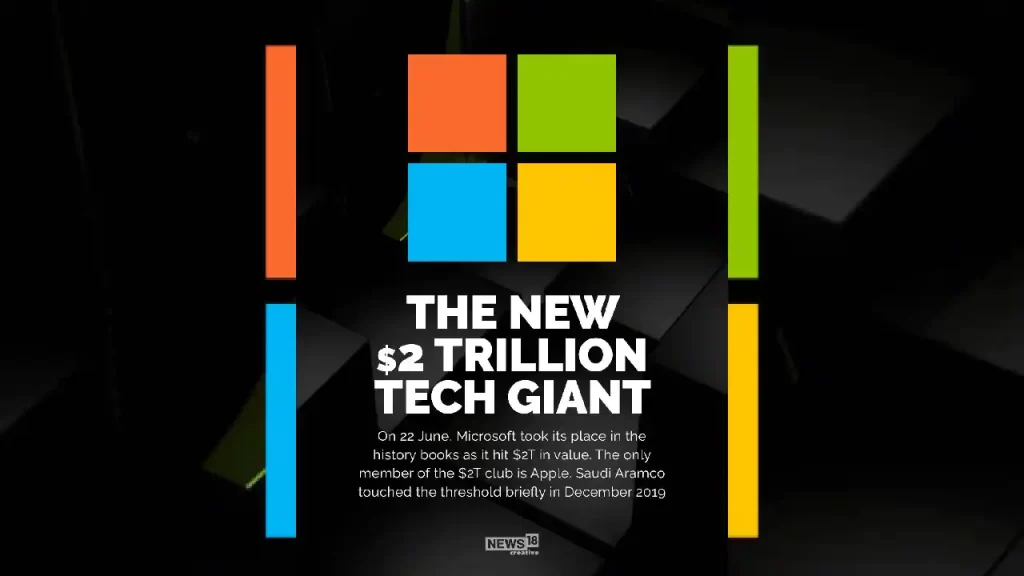
Key Statistics:
- As of June 2021, Microsoft is worth $2 trillion.
- Microsoft Office 365 controls nearly half of the office productivity software market.
- Microsoft’s net income was $61.3 billion in the 2021 fiscal year.
- Microsoft Azure has over 20,000 customers.
Aside from operating system software, Microsoft has now launched a variety of different application software technologies such as Cloud services, Operating systems, .net, and visual basics.
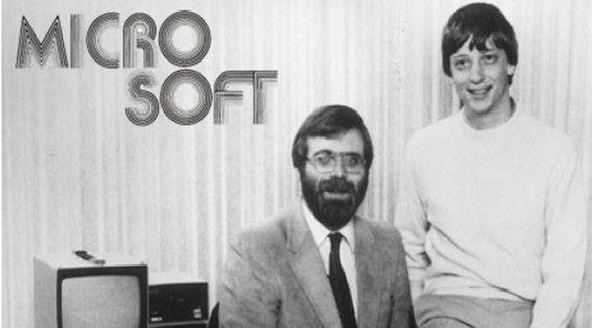
- 1975: Bill Gates and Paul Allen founded Microsoft; they offer BASIC, the first PC computer language program, to MITS Computer, Microsoft’s first client.
- 1981: Microsoft, Inc. is founded; IBM’s first personal computer runs Microsoft’s 16-bit operating system.
- Paul Allen stands down as executive vice president but continues on the board of directors; Jon Shirley is appointed president of Microsoft (he eventually becomes CEO); Microsoft debuts the Microsoft Mouse and Word for MS-DOS 1.00.
- 1985: Microsoft and IBM formed a collaborative development agreement. They release Windows 1.0 (the first window-based operating system), and Bill Gates becomes the youngest self-made billionaire at the age of 31 in 1986.
- 1989: Microsoft collaborated on the development of SQL Server 1.0.
- 1990: Jon Shirley leaves as president and CEO; Michael R. Hallman succeeds him; the company becomes the first PC software firm to exceed $1 billion in revenues in a single year.
- 1992: Microsoft releases Windows 3.1. Microsoft Windows now has over 25 million licensed users.
- 1994: Microsoft introduced Windows NT.
- 1995: Microsoft released Windows 95, selling one million copies in four days.
- 1997: The Justice Department charges Microsoft with violating a 1994 consent decree governing the licensing of the Windows operating system to computer manufacturers.
- 1998: The United States Department of Justice files two antitrust cases against Microsoft, alleging the organization violated the Sherman Act.
- 2001: Microsoft Windows XP is released worldwide.
- 2002: Microsoft acquires Great Plains Software.
- 2003: Microsoft releases Windows Server.
- 2004: Microsoft launches a five-country test program for Windows XP Starter Edition, a low-cost introduction to Windows XP aimed at first-time desktop PC customers in developing technology markets.
- 2005: MSN provides a new Search service in 25 locations and 10 languages. The new MSN Search service provides more relevant results, instant answers to particular questions, and a set of tools that give Internet users more control over targeting and refining searches.
- 2007: Windows Vista was introduced to consumers, along with a new version of Microsoft Office, and the first beta of the.NET framework was released.
Bill Gates departs Microsoft in 2008 to pursue charitable activities. - 2009: Microsoft released Windows 7 this year. All previous sales records are broken.
- 2010: Apple passes Microsoft to become the most valuable technology business in America for the first time.
- 2012: Microsoft released Windows 8 (for everyone),.NET framework 4.5, Internet Explorer 10, and other products.
- 2013: Windows 8.1 and Office 2013 were released to consumers.
- 2014: The Microsoft Lumia 535, the first Microsoft-branded Lumia device, was released Microsoft Windows 10 will be released in 2015, along with Office 2016.
Cloud computing has become a technology that influences everyone’s lives every day. We utilize cloud-based apps to maintain friendships and save our stuff on the cloud.
IT departments have likewise progressed from being skeptical about cloud security to investing billions of dollars in cloud services. The cloud allows small, medium, and large businesses to simply rent the programs and servers they require rather than purchasing them.
Amazon and VMware are major cloud service providers, but Microsoft is attracting potential customers away from these new suppliers by offering extremely competitive services at low costs.
1. Microsoft Azure
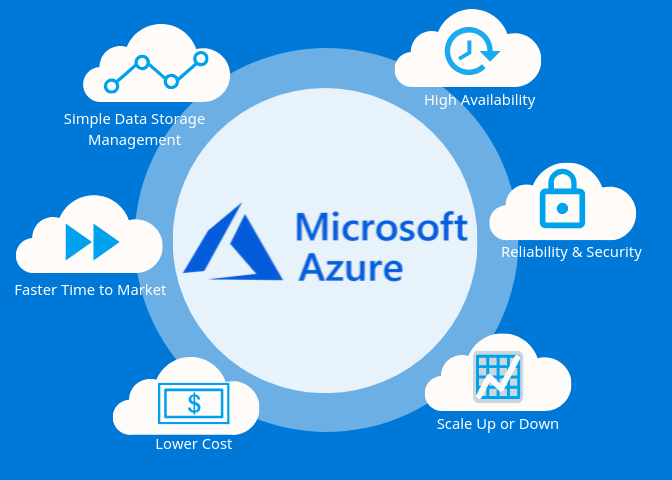
Azure is Microsoft’s large enterprise cloud, which is available as a PaaS and IaaS service. It is a popular service among developers who utilize the company’s coding tools to create apps. Azure allows you to save money, work faster, and combine data and on-premises applications in a powerful, scalable, and flexible manner.
Unlike many other cloud providers, which compel clients to pick between the public cloud and their own data centers, this feature-rich service provides a hybrid cloud solution. Hybrid cloud solutions are recognized to provide greater efficiency and economy in data storage, backup, and recovery.
Azure support has been extended from Windows to Linux, allowing more people to access the services. Clients only pay for the services that they require. Clients can utilize Azure to better provide Windows and Linux virtual machines, construct modern mobile and enterprise solution apps for Windows, iOS, and Android, obtain insights from data, and manage user accounts while synchronizing with on-premises data directories.
Azure or AWS? Azure takes the lead with more data centers and higher uptime.
2. MS Office 365
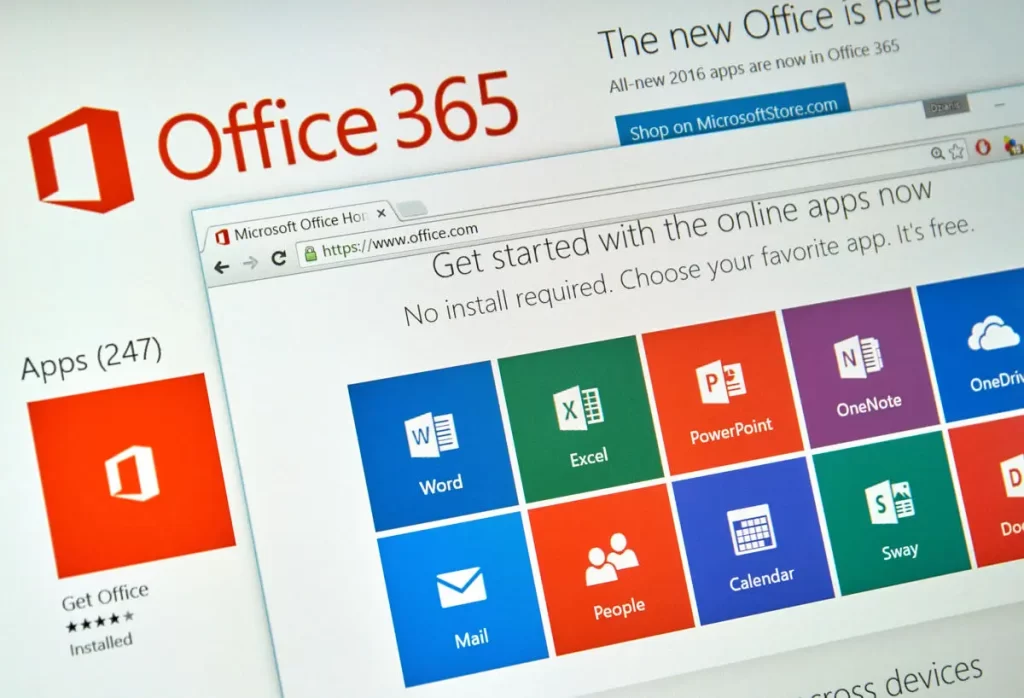
Being a trillion-dollar company, Microsoft’s decision to put its popular MS Office programs on the cloud was a wise one. It is known as Office 365, and it allows clients to access email and calendars on the road, work from anywhere using Office apps, and have better conferencing capabilities, all while maintaining extra security.
Word, PowerPoint, Excel, OneNote, Outlook, Access, Publisher, Lync, and InfoPath are all included in the Office 365 bundle. This widely used Microsoft cloud service has delighted users all around the world. Businesses and enterprises require MS Office activation to use these services.
3. MS Windows Intune
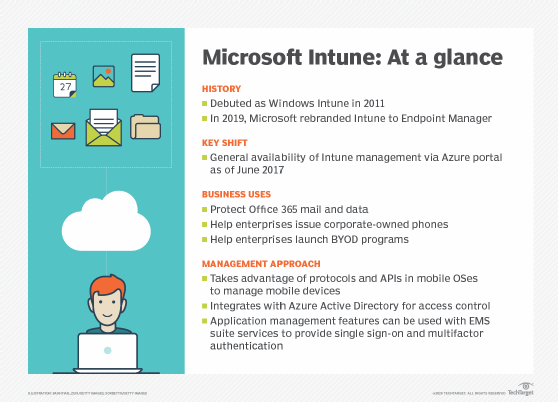
Microsoft’s cloud mobile management tool, Windows Intune, enables enterprises to manage devices through the cloud or when linked to a Microsoft System Center. It supports the Windows, iOS, and Android platforms and makes it simple to manage mobile devices and PCs from a single location.
Users can set their devices to meet the company’s compliance requirements while also improving efficiency without the need for extra infrastructure. The software allows users to operate from anywhere while providing the security that Microsoft products are known for. It is a boon for corporations who wish to eliminate third-party solutions and keep everything centralized in Windows client-heavy organizations.
4. Microsoft SQL Server with MS System Center
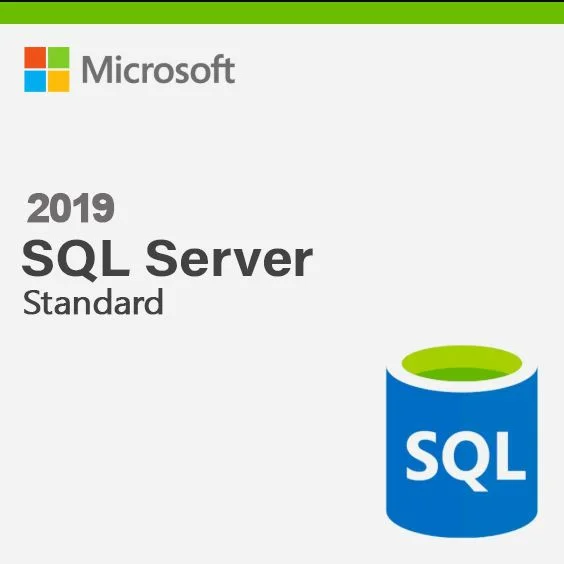
Microsoft’s cloud mobile management tool, Windows Intune, enables enterprises to manage devices through the cloud or when linked to a Microsoft System Center. It supports the Windows, iOS, and Android platforms and makes it simple to manage mobile devices and PCs from a single location. Users can set their devices to meet the company’s compliance requirements while also improving efficiency without the need for extra infrastructure.
The software allows users to operate from anywhere while providing the security that Microsoft products are known for. It is a boon for corporations who wish to eliminate third-party solutions and keep everything centralized in Windows client-heavy organizations.
5. Enterprise Mobility Suite
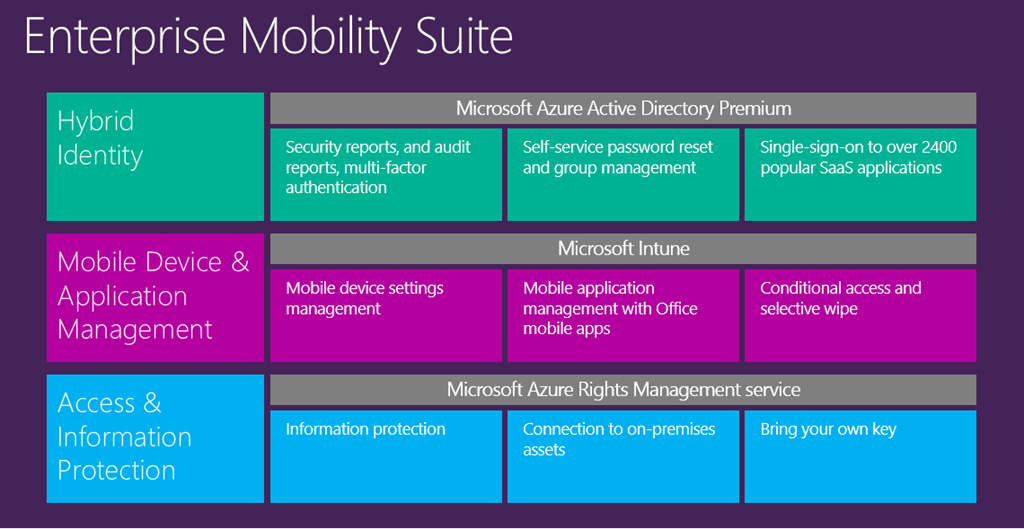
The recently released Enterprise Mobility Suite enables customers to manage many devices from a single environment by leveraging current Microsoft technologies such as Windows Intune, MS Azure Active Directory Premium, and MS Azure Rights Management.
With MS EMI, you can control all of your devices from one unified framework, safeguard your data with MS Azure Rights Management, and manage identity with Azure Active Directory. Though the product is new to the cloud services industry, it is quickly gaining popularity among companies and smaller organizations looking for hybrid cloud management services with dependable security.
6. Microsoft Visual Studio
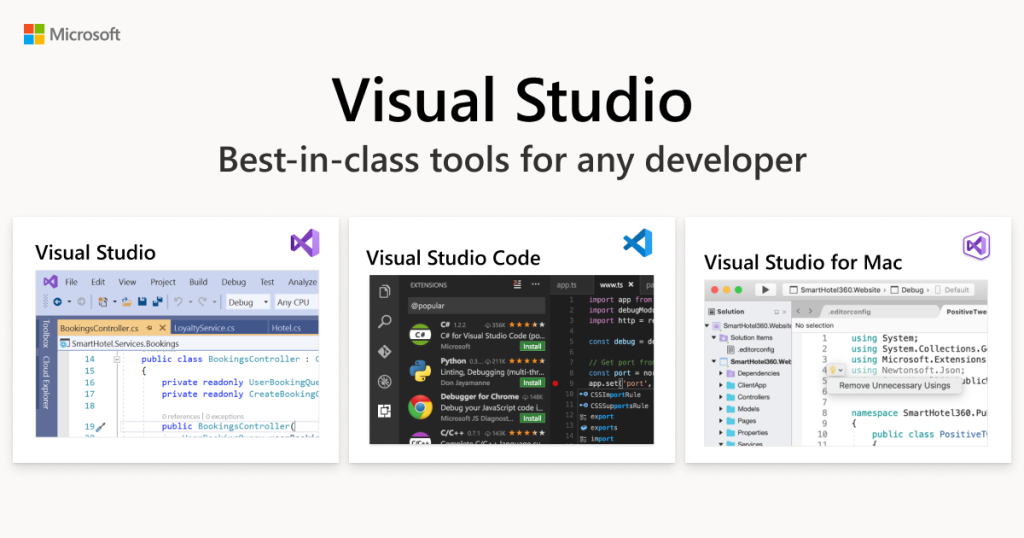
The recently released Enterprise Mobility Suite enables customers to manage many devices from a single environment by leveraging current Microsoft technologies such as Windows Intune, MS Azure Active Directory Premium, and MS Azure Rights Management.
With MS EMI, you can control all of your devices from one unified framework, safeguard your data with MS Azure Rights Management, and manage identity with Azure Active Directory. Though the product is new to the cloud services industry, it is quickly gaining popularity among companies and smaller organizations looking for hybrid cloud management services with dependable security.
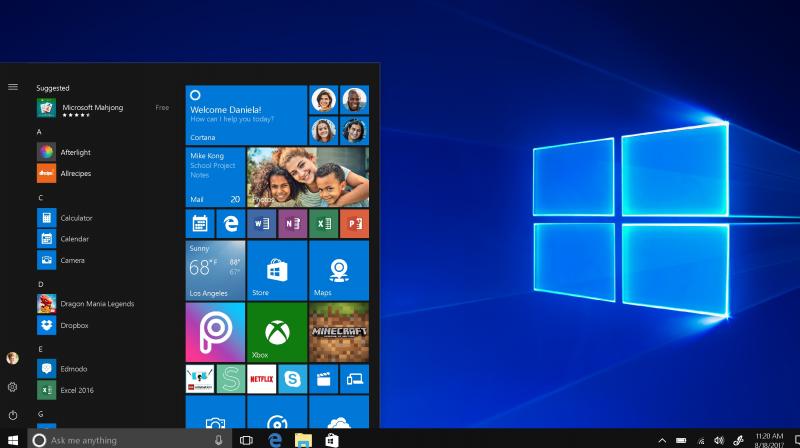
Microsoft’s Windows is a graphical operating system. It enables users to view and store information, run the software, play games, watch videos, and access the internet. It was made available for both personal and professional use.
For the first few years, Microsoft struggled with Windows.
Microsoft unveiled its initial Windows operating system, Windows 1.0, in 1983, but it wasn’t released until November 1985. Windows 1.0, greatly influenced by Apple’s existing graphical user interface, was more user-friendly than DOS’ command-line functionality, with menus that could be accessed with a keyboard or mouse.
But it wasn’t until Windows 3.0 was released in 1990 that it gained some traction among users. When Windows 3.1 was released in 1992, it finally gained mainstream popularity. With the release of Windows 95 in 1995, the transition from DOS-based software to Windows-based apps began.
However, to run Windows, the PC had to first boot into DOS. DOS was a 16-bit operating system, whereas Windows was a 32-bit one. As a result, Windows became prone to crashes. Microsoft hired senior engineer David Cutler from Digital Equipment Corp. in 1992 to create a new 32-bit operating system from scratch. It was known as Windows NT, with the letter NT standing for “new technology.”
However, early versions of NT had high system requirements, and only a few PCs could run it. As a result, Microsoft repurposed Windows NT as a server operating system. However, as hardware improved, an increasing number of individuals began to use Windows NT as a desktop operating system.
As a result, in the late 1990s, Microsoft began work on combining Windows 95 and Windows NT into a single operating system. As a consequence, Windows 2000 was launched in the year 2000, followed by Windows XP for desktops the subsequent year and Windows Server 2003 two years later.
Among the other Windows releases are:
- Windows Vista was released in January 2007
- Windows 7 will be released in October 2009
- Windows 8 will be released in October 2012. (later updated to Windows 8.1)
- Windows 10 will be released in July 2015, while Windows 11 will be released in October 2021.
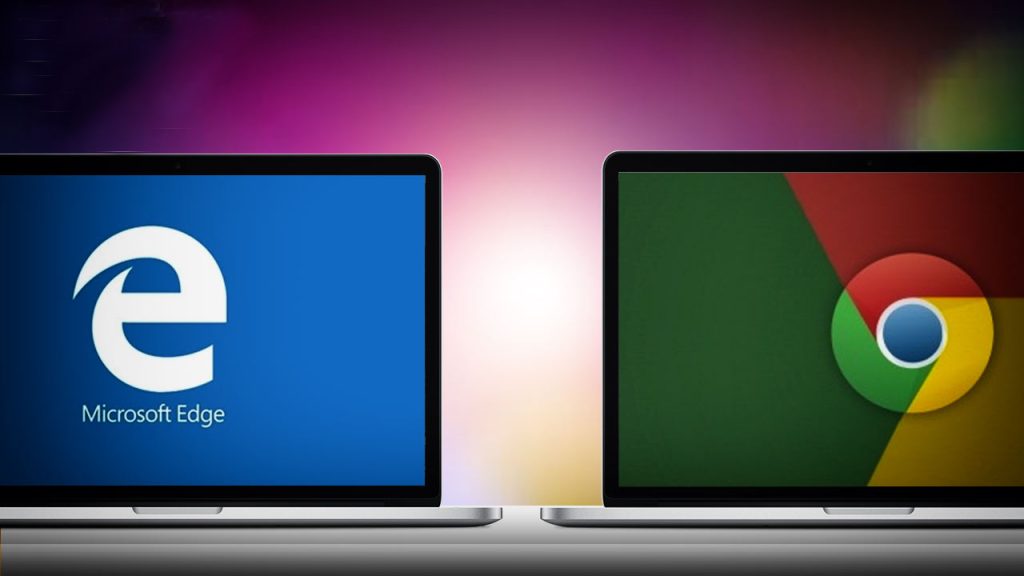
In the mid-1990s, Microsoft rejected growing interest in the internet, but understanding that the web was here to stay, it debuted its web browser, Internet Explorer, in Windows 95 Plus in 1995.
Internet Explorer is a web browser that comes bundled with all Microsoft PCs. Microsoft deprecated Internet Explorer in Windows 10 in favor of its newer Edge browser. Edge slowly fell out of favor with users, who preferred the Google Chrome and Mozilla Firefox browsers. In 2019, Microsoft embraced Google’s Chrome-based browser engine, along with its upgrades.
Microsoft Gaming Xbox
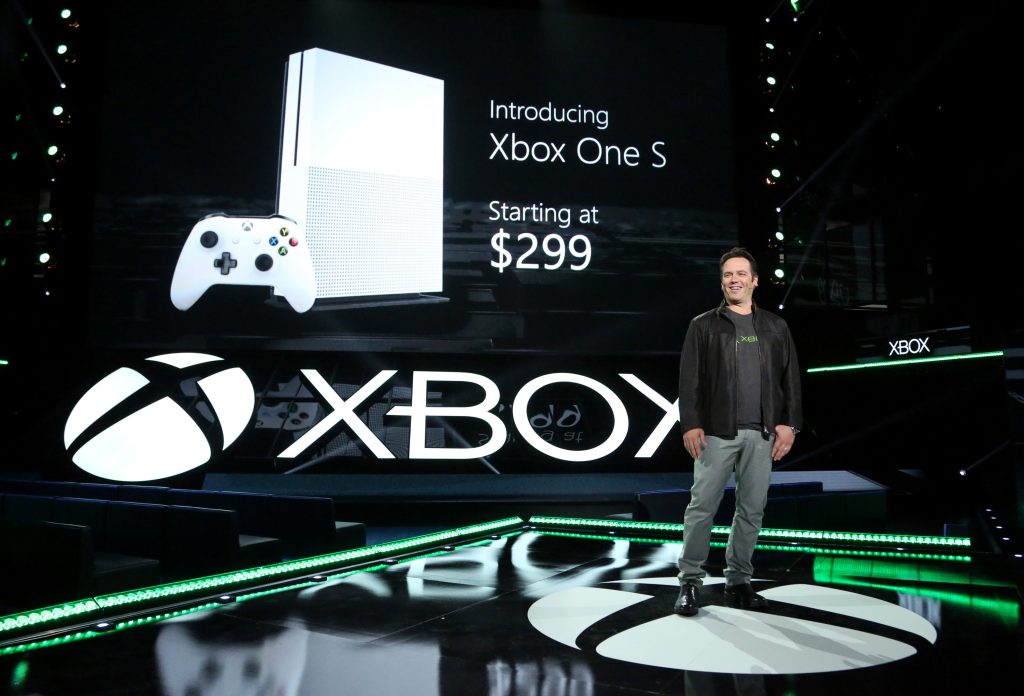
Xbox is a video gaming brand created and owned by Microsoft. The brand consists of five video game consoles, as well as applications (games), streaming services, an online service by the name of Xbox network, and the development arm by the name of Xbox Game Studios. The brand was first introduced in the United States in November 2001, with the launch of the original Xbox console.
After the Atari Jaguar was discontinued in 1996, the original product was the first gaming console manufactured by an American corporation. By May 2006, it had sold over 24 million units. The Xbox 360, Microsoft’s second console, was introduced in 2006 and has sold 86 million units as of October 2021.
The Xbox One, the third system, was released in November 2013 and has sold 51 million units to date. The Xbox Series X and Series S consoles, the fourth generation of Xbox consoles, were introduced in November 2020.
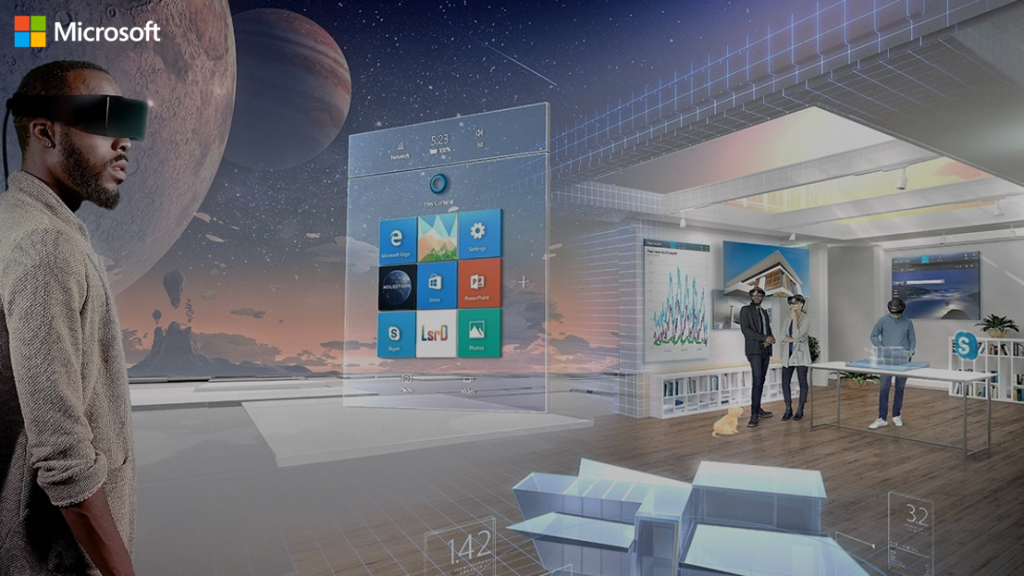
Every industry – whether it’s oil and gas, retail, financial services, agri-tech – all are being transformed by digital technology.⸺ Satya Nadella, Microsoft CEO.
In a digital-first world, digital transformation is about reinventing how you integrate people, data, and processes to generate value for your consumers and preserve a competitive advantage.
Digital technologies open up new opportunities for businesses all around the world by altering how goods and services are created, marketed, and consumed. These technologies assist your firm in adapting to competing demands and changing client expectations. This frequently entails reinventing the digital platform, culture, and overall transformation approach with a focus on consumer engagement, business processes, and data and intelligence.
Microsoft empowers its clients and partners to create cutting-edge, personalized solutions by harnessing the power of the intelligent cloud and intelligent edge. These solutions help them function and compete more effectively in a rapidly changing world. The intelligent cloud is ubiquitous computing powered by AI and facilitated by the cloud. In this sense, we refer to Azure as the world’s computer, capable of powering any intelligent application or system that our clients may imagine.

OneDrive
Microsoft OneDrive (previously SkyDrive) is a Microsoft-operated file-hosting service. It was first released in August 2007 and allows registered users to exchange and synchronize their data. OneDrive also serves as the storage backing for Microsoft Office’s web version. OneDrive provides 5 GB of free storage space, with 100 GB, 1 TB, and 6 TB storage choices available independently or with Office 365 subscriptions.
Outlook
Microsoft Outlook is a personal information manager software system that is included in the Microsoft Office suite. Outlook is essentially an email client, but it also contains calendaring, task management, contact management, note-taking, journal logging, and web browsing.
OneNote
Microsoft OneNote is a free-form information collecting and multi-user collaboration note-taking tool. It collects user remarks, drawings, screen captures, and voice commentary. Notes can be distributed to other OneNote 365 users through the Internet or a network. OneNote is included in the Microsoft Office suite. but it is also accessible as a free stand-alone program through the official website and app stores for Windows 10, macOS, iOS, and Android. As part of OneDrive and Office for the computer, Microsoft also offers a web-based version of OneNote.
Microsoft Teams
Microsoft Teams is a private commercial communication platform created by Microsoft that is part of the Microsoft 365 product line. Teams compete primarily with Slack, a comparable service that provides workspace chat and videoconferencing, file storage, and enterprise applications.
Microsoft, like other large firms, makes several acquisitions each year. Here are some noteworthy acquisitions.
Skype
Microsoft paid $8.5 billion for Skype, a VoIP-based video and text messaging service, from eBay in 2011. Skype has currently included in the Windows 11 operating system and is generally used for one-on-one communication, whereas Microsoft Teams is utilized for group discussions. Between Skype and Zoom, Skype offers many e-commerce-centric features that include getting a number, clearer calls, and a secure connection.
Nokia
In 2013, Microsoft paid $7.2 billion for Nokia. Microsoft was fighting in the smartphone market against Apple and Android at the time, and Nokia was the most vocal proponent of the Windows Phone operating system. However, Windows Phone never gained popularity, lost developers, and was eventually abandoned.
Microsoft paid $26 billion for LinkedIn, a professional social media platform, in December 2016. The business recently announced intentions to combine LinkedIn with its video conferencing platform Microsoft Teams.
Nuance Communications
Microsoft said in April 2021 that it will spend $16 billion to acquire Nuance Communications, the leading manufacturer of speech recognition software Dragon NaturallySpeaking.
Activision-Blizzard
Microsoft attempted to strengthen its influence in the gaming business in January 2022 by paying $68 billion for Activision-Blizzard, the producer of game brands such as Call of Duty and Diablo.
Microsoft, a trillion-dollar company, is transforming the world of technology. Microsoft is succeeding in every industry, from Windows to Android, gaming to coding, cloud-based services to social networking.
With the help of Microsoft, small and large enterprises can take full advantage of e-commerce services that include secure cloud storage, worldwide access to servers, cloud computing, OS, etc.
PROS is the leading Web design and development service provider, Shopify development company and provides Shopify support and maintenance services. We have designed 100000 web pages and some of the best e-commerce stores that include AmourPrint, ShopMelissa, etc.
Get in touch with us today.
Deepak Wadhwani has over 20 years experience in software/wireless technologies. He has worked with Fortune 500 companies including Intuit, ESRI, Qualcomm, Sprint, Verizon, Vodafone, Nortel, Microsoft and Oracle in over 60 countries. Deepak has worked on Internet marketing projects in San Diego, Los Angeles, Orange Country, Denver, Nashville, Kansas City, New York, San Francisco and Huntsville. Deepak has been a founder of technology Startups for one of the first Cityguides, yellow pages online and web based enterprise solutions. He is an internet marketing and technology expert & co-founder for a San Diego Internet marketing company.



